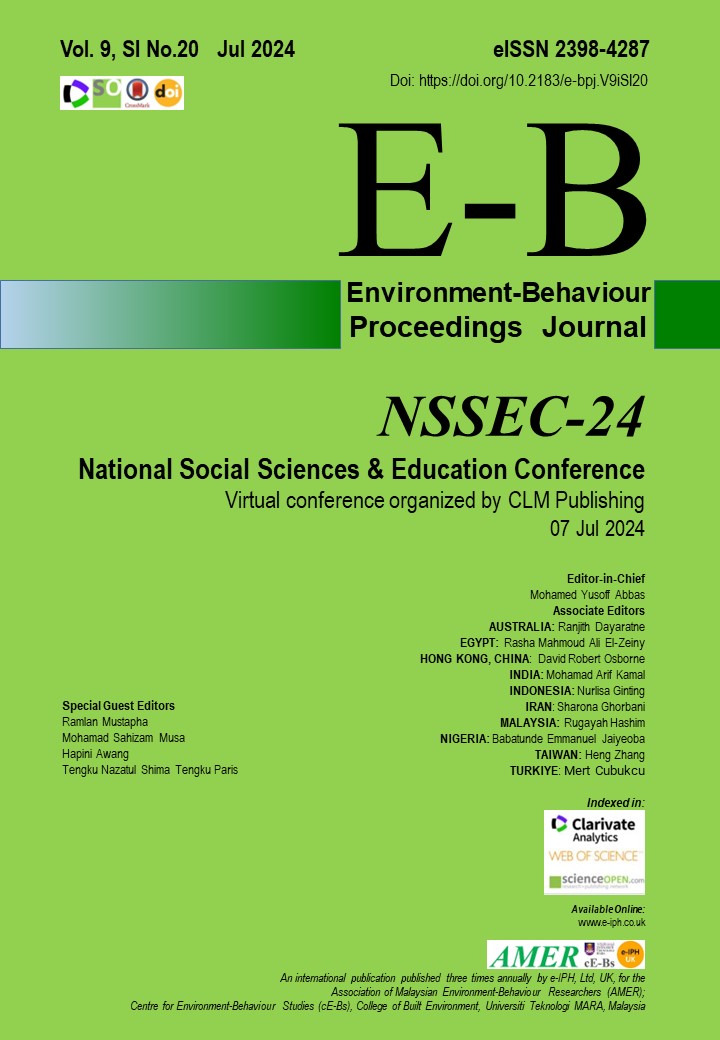Effects of Biofeedback Training on HRV, Mood State and Shooting Performance of Shooters
DOI:
https://doi.org/10.21834/e-bpj.v9iSI20.6100Keywords:
Biofeedback Training, Heart Rate Variability, Mood State, Shooting PerformanceAbstract
This study investigates the effects of biofeedback training on the HRV, emotional state, and shooting performance of athletes. Results indicate significant improvement in athletes' HRV frequency domain indices (p < 0.05), reduced negative emotions like tension and anger (p < 0.05), increased vitality and positivity, though changes in fatigue and self-emotional state weren't statistically significant (p > 0.05). Shooting performance significantly improved post-training (p < 0.01). This suggests that biofeedback training positively impacts autonomic nervous system function, emotional stability, and shooting skills. Biofeedback training significantly enhances shooting performance by improving HRV, optimizing emotional state, and strengthening emotional regulation abilities.
References
Argilés, M., Quevedo-Junyent, L., & Erickson, G. (2022). Topical review: optometric considerations in sports versus E-sports. Perceptual and motor skills,129(3), 731-746. DOI: https://doi.org/10.1177/00315125211073401
Baker, F., Denniston, M., Zabora, J., Polland, A., & Dudley, W. N. (2002). A POMS short form for cancer patients: psychometric and structural evaluation. Psycho‐Oncology: Journal of the Psychological, Social and Behavioral Dimensions of Cancer, 11(4), 273-281. DOI: https://doi.org/10.1002/pon.564
Cerritelli, F., Frasch, M. G., Antonelli, M. C., Viglione, C., Vecchi, S., Chiera, M., & Manzotti, A. (2021). A review on the vagus nerve and autonomic nervous system during fetal development: searching for critical windows. Frontiers in Neuroscience, 15, 721605. DOI: https://doi.org/10.3389/fnins.2021.721605
Crameri, L., Hettiarachchi, I. T., & Hanoun, S. (2021). Effects of dynamic resilience on the reactivity of vagally mediated heart rate variability. Frontiers in Psychology, 11, 579210. DOI: https://doi.org/10.3389/fpsyg.2020.579210
Dagnall, N., Drinkwater, K. G., Denovan, A., & Walsh, R. S. (2021). The potential benefits of non-skills training (mental toughness) for elite athletes: Coping with the negative psychological effects of the COVID-19 pandemic. Frontiers in Sports and Active Living, 3, 581431. DOI: https://doi.org/10.3389/fspor.2021.581431
Englert, C., Dziuba, A., Wolff, W., & Giboin, L. S. (2021). An investigation of the effects of self-reported self-control strength on shooting performance. Psychology of Sport and Exercise, 52, 101839. DOI: https://doi.org/10.1016/j.psychsport.2020.101839
Ferguson, K. N., & Hall, C. (2020). Sport biofeedback: exploring implications and limitations of its use. The Sport Psychologist, 34(3), 232-241. DOI: https://doi.org/10.1123/tsp.2019-0109
Gronwald, T., Hoos, O., & Hottenrott, K. (2020). Influence of performance level of male runners on non-linear dynamics of heart rate variability during a 10Km race. International Journal of Performance Analysis in Sport, 20(4), 569-583. DOI: https://doi.org/10.1080/24748668.2020.1764746
Horvath, E., Kovacs, M. T., Toth, D., & Toth, L. (2022). A study of the relationship between anxiety, cognitive emotion regulation and heart rate variability in athletes. Journal of physical education and sport,22(2), 528-534.
Ju, F., Wang, Y., Yin, B., Zhao, M., Zhang, Y., Gong, Y., & Jiao, C. (2023). Microfluidic wearable devices for sports applications. Micromachines, 14(9), 1792. DOI: https://doi.org/10.3390/mi14091792
Lehrer, P. M. (2018). Heart rate variability biofeedback and other psychophysiological procedures as important elements in psychotherapy. International Journal of Psychophysiology,131, 89-95. DOI: https://doi.org/10.1016/j.ijpsycho.2017.09.012
Lehrer, P., Kaur, K., Sharma, A., Shah, K., Huseby, R., Bhavsar, J., & Zhang, Y. (2020). Heart rate variability biofeedback improves emotional and physical health and performance: A systematic review and meta-analysis. Applied psychophysiology and biofeedback,45, 109-129. DOI: https://doi.org/10.1007/s10484-020-09466-z
Ortega, E., & Wang, C. J. K. (2018). Pre-performance physiological state: Heart rate variability as a predictor of shooting performance. Applied psychophysiology and biofeedback,43, 75-85. DOI: https://doi.org/10.1007/s10484-017-9386-9
Park, S. H., Jeon, J. Y., & Lim, S. T. (2020). The relationship between psychological and physiological stress perceived by elite shooters. Korean Journal of Sport Science,31(2), 370-381. DOI: https://doi.org/10.24985/kjss.2020.31.2.370
Pizzoli, S. F., Marzorati, C., Gatti, D., Monzani, D., Mazzocco, K., & Pravettoni, G. (2021). A meta-analysis on heart rate variability biofeedback and depressive symptoms. Scientific reports, 11(1), 6650. DOI: https://doi.org/10.1038/s41598-021-86149-7
Ramchandani, R., Florica, I. T., Zhou, Z., Alemi, A., & Baranchuk, A. (2024). Review of Athletic Guidelines for High-Altitude Training and Acclimatization. High Altitude Medicine & Biology, 25(2), 113-121. DOI: https://doi.org/10.1089/ham.2023.0042
Reito, A., Raittio, L., & Helminen, O. (2020). Revisiting the sample size and statistical power of randomized controlled trials in orthopaedics after 2 decades. JBJS reviews, 8(2), e0079. DOI: https://doi.org/10.2106/JBJS.RVW.19.00079
Rydzik, Ł., Wąsacz, W., Ambroży, T., Javdaneh, N., Brydak, K., & Kopańska, M. (2023). The Use of Neurofeedback in sports Training: systematic review. Brain Sciences,13(4), 660. DOI: https://doi.org/10.3390/brainsci13040660
Schinke, R. J. (2024). Gifted: 8 Steps to Succeeding in Sport, Work, and Life. Human Kinetics.
Spangler, D. P., Alam, S., Rahman, S., Crone, J., Robucci, R., Banerjee, N., ... & Brooks, J. R. (2020). Multilevel longitudinal analysis of shooting performance as a function of stress and cardiovascular responses. IEEE Transactions on Affective Computing, 12(3), 648-665. DOI: https://doi.org/10.1109/TAFFC.2020.2995769
Sut Txi, M. R., Hashim, H. A., & Krasilshchikov, O. (2020). The Effects of Integrating Biofeedback Training into a 12-Week Periodized Training Program on Galvanic Skin Response and Anxiety Level Among Junior Archers. In Enhancing Health and Sports Performance by Design: Proceedings of the 2019 Movement, Health & Exercise (MoHE) and International Sports Science Conference (ISSC) (pp. 528-537). Springer Singapore. DOI: https://doi.org/10.1007/978-981-15-3270-2_54
Tok, S., Dal, N., Zekioğlu, A., Çatıkkaş, F., Balıkçı, İ., & Doğan, E. (2020). Autonomic cardiac activity among novice archers during baseline, shooting, and recovery. The Journal of Strength & Conditioning Research, 34(9), 2627-2635. DOI: https://doi.org/10.1519/JSC.0000000000002640
Wang, H., Wang, W., Wu, D., Gao, X., & Shi, Y. (2024). The mechanism and application of heart rate variability biofeedback regulation of the autonomic nervous system. Chinese Journal of Tissue Engineering Research,28(26), 4257.
Downloads
Published
How to Cite
Issue
Section
License
Copyright (c) 2024 Huang Donghai, Muhammad Nubli Abdul Wahab

This work is licensed under a Creative Commons Attribution-NonCommercial-NoDerivatives 4.0 International License.





